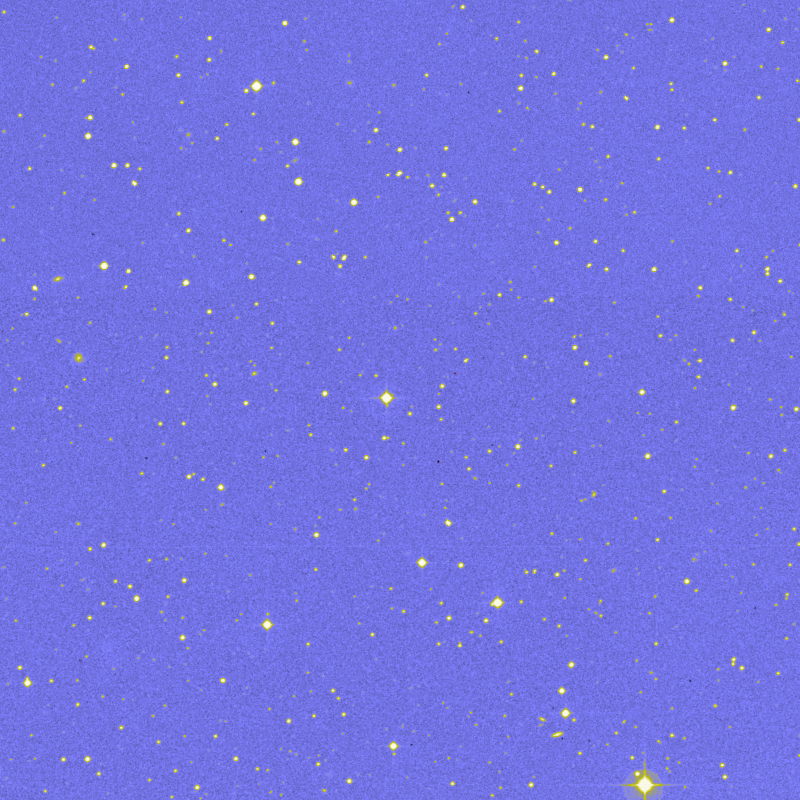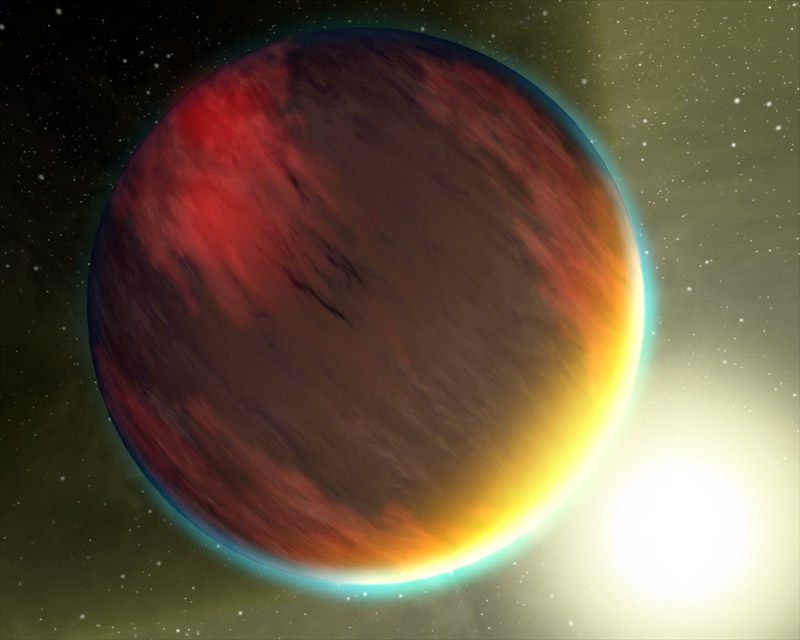APOD 4.05

This skyview is of Gliese 581, a star system only 20 light years away in Libra. What is amazing is that there are 3 confirmed planets orbiting this planet, with one being the most Earth-like ever discovered. This "Super Earth," as it is being called, is about 5 times as massive as the Earth, and has a diameter of about 1.5 that of Earth's. It's orbit is about 14 times less then that of the Earth's, which makes it orbit once every 13 days. Gliese 581 is a red-dwarf, which makes its habitable zone much smaller, but the "Super Earth" resides in it, which means its mean surface temperature is 0 - 40 C, making liquid water possible.



